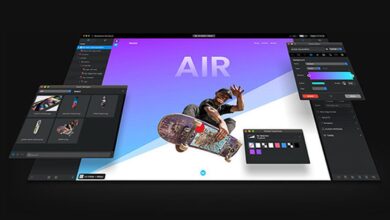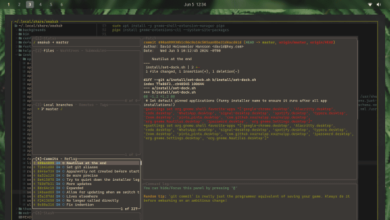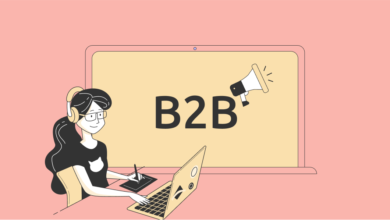10 Online Resources – Forbes Advisor

Editorial Note: We earn a commission from partner links on Forbes Advisor. Commissions do not affect our editors’ opinions or evaluations.
Python’s popularity keeps skyrocketing, and it’s easy to see why. From the coding language’s simple syntax to its ease of use, its versatility to its supportive community, Python offers an excellent option for beginners learning to code.
Python’s various applications include web development, machine learning, system scripting and software testing. Web platforms you may know and love, such as Google, YouTube, Spotify, Pinterest, Dropbox and Netflix, use Python in some capacity.
While learning a programming language may seem daunting, Python features intuitive syntax and can suit both beginners and seasoned programmers. This article discusses what Python is used for and outlines 10 free online courses teaching how to learn Python.
What Is Python, and What Is It Used For?
Python is a high-level, interpretive programming language often used to build websites and software, analyze data and automate tasks. Programmers also use Python for:
- Data science
- Data visualization
- Artificial intelligence
- Software testing or prototyping
- Game development
- Desktop applications
- Systems administration
As a general-purpose language, Python isn’t specialized for a specific domain or application, and it can be used to create various programs. Python is often associated with data-heavy professions like data science and programming because of its powerful data analysis and manipulation capabilities. However, others use Python to streamline repetitive, everyday tasks and automate workflows.
One of Python’s defining features is its ease of use. Its simple syntax requires less code than many other programming languages, making it accessible to coding beginners and non-tech professionals. A marketer, for example, could use Python to automate repetitive tasks such as generating emails, generating reports, and downloading and organizing data from different sources.
Benefits of Learning Python
Learning Python boasts several benefits, especially in today’s technology-driven world. Whether you’re a professional programmer or a beginner looking to develop a new skill, Python’s popularity, versatility, ease of use and diverse applications make it valuable for many tasks. Below we list just a few of Python’s many benefits.
- Beginner-friendly. If you’re new to coding, Python is a beginner-friendly language known for its simple and concise syntax. Since it’s an interpreted programming language, a third-party “interpreter” program translates the code for a computer. This simplifies the debugging process by allowing you to instantly check the output of your code and make corrections as needed.
- Versatile. One of Python’s defining features is its versatility. As a multipurpose language, Python can serve in various contexts and applications, including web development, machine learning, data analysis and automation.
- Extensive libraries and modules. Python offers many libraries, or collections of resources, to help streamline application development. Instead of writing code from scratch, beginners and experienced programmers can pull code from libraries.
- Large, active developer community. Python has a robust and vibrant community of enthusiasts, developers and learners willing to help and share their knowledge. This community has created a larger library of sources, tutorials and documentation to help beginners get started. In Python-dedicated online forums, social media groups and chat rooms, beginners can ask questions and learn from more experienced developers.
10 Free Online Python Courses
Coursera’s Programming for Everybody (Getting Started with Python)
If you’re ready to learn Python for beginners, Programming for Everybody (Getting Started with Python) is a comprehensive, entry-level course covering Python programming fundamentals. In this self-paced course from Coursera educational partner the University of Michigan, you’ll study Python syntax and semantics and learn how to utilize core programming tools such as loops and functions and how to use variables to store, retrieve and calculate information.
Microsoft’s Introduction to Python
Microsoft’s Introduction to Python is a short, 16-minute module comprising eight units. Beginners who are new to programming or have limited experience with Python can learn about running Python applications, utilize the Python interpreter to run scripts and statements, define variables, and create a basic Python application that receives input and generates output.
Udemy’s Learn Python for Total Beginners
Udemy’s introductory Python course overviews the fundamentals of any programming language with Python 3 and Anaconda using Jupyter Notebook. Students learn to install Jupyter Notebook IDE and become familiar with its core features. This course features 32 lectures divided into eight sections covering basics, data structures, control flow, loops, functions and files. Students tackle five exercises, along with complete solutions.
Udemy’s Introduction To Python Programming
Udemy’s quick and easy Python introductory course is split into three sections, featuring 19 on-demand video lectures totaling nearly over an hour of content. You’ll receive step-by-step guidance through Python’s coding basics and syntax. Students explore fundamental concepts such as variables, strings and lists, data types, file manipulation, loops and conditions, and functions.
Google’s Python Class
Google’s intensive, two-day Python course suits participants with a basic understanding of programming language concepts and minimal programming experience. This course features written materials, code exercises and video lectures covering basic Python concepts. Learners study strings and lists, processes, text files and HTTP connections. Students complete a series of coding exercises that gradually become more challenging.
freeCodeCamp’s Learn Python
This popular YouTube tutorial course is nearly 4.5 hours long and provides a comprehensive introduction to Python’s core concepts, starting with how to install Python and PyCharm. You’ll learn about variables, data types, strings, user input, lists, loops and object functions. You’ll also learn how to build a calculator, translator, guessing game and multiple-choice quiz.
educative’s Learn Python 3 from Scratch
This beginner-level interactive course lays the building blocks for Python 3, beginning with Python fundamentals and eventually advancing to higher-level concepts such as functions and loops. The live coding environments reinforce practical, hands-on learning, encouraging active engagement and learning retention.
This course comprises 14 lessons and features 29 illustrations, 62 playgrounds and five quizzes. By the end of the course, you’ll be able to create your own basic applications using Python 3.
Codecademy’s Learn Python 2
Codecademy’s Python 2 course best serves beginners aiming to learn fundamental programming concepts and the Python programming language. This course takes around 17 hours to complete and includes 20 lessons, nine projects and nine quizzes divided among 12 modules. You’ll learn Python syntax, strings and console output, conditionals and control flow, functions, lists and dictionaries, lists and functions, and loops.
Students complete projects, including real-world applications. Toward the end of the course, learners explore more advanced Python topics, such as list comprehension, list slicing, data structure and lambda expressions.
Coursera’s Advanced Algorithms and Complexity
Coursera’s course, offered in partnership with the University of San Diego, covers advanced algorithms and complexity and provides intermediate Python learners with the tools to solve challenging problems with more advanced algorithms.
In this course, you’ll first learn about network flows and their applications, linear programming and streaming algorithms used in Big Data processing. This course takes around 27 hours to complete and features video lectures, reading materials and quizzes.
Real Python’s Advanced Python Tutorials
Real Python offers in-depth tutorials using article and video course formats. These materials cover advanced topics in Python programming, including data structures, machine learning, functional programming, object-oriented programming, parallel programming, concurrency and text classification. Each tutorial provides detailed explanations and examples of the concepts covered.
University-Affiliated Python Courses
In recent years, massive open online courses (MOOCs) have emerged as an accessible, low-cost or no-cost way for learners to gain skills outside of traditional academic programs. MOOC aggregators such as Coursera, edX and FutureLearn host content from various providers, often including accredited colleges and universities.
If you’re interested in a free Python course with a university stamp of approval, these MOOC platforms are a great place to start. Some courses may charge a fee for completion verification, such as a certificate or badge, but if you don’t need this feature, you can usually learn for free.
In addition to the courses described above provided by the University of Michigan and the University of San Diego through Coursera, you can find free Python courses from Harvard University and MIT on the edX platform. Other higher education institutions publish and host their own courses. For example, the University of Helsinki offers introductory and advanced Python MOOC that features live or recorded lectures, exercises and a graded final exam.
Frequently Asked Questions (FAQs) About Learning Python
Is it difficult to learn Python?
Learning Python can be challenging, especially if you’re new to programming, but the language is often hailed for its intuitive syntax. Python is considered relatively easy to learn because of its simple code structure and readability. Many Python learning resources are available, including video tutorials, interactive coding platforms and online courses.
How do you start learning Python by yourself?
You can start learning Python by choosing a resource or platform that aligns with your learning style, needs and goals. Several free and paid resources are available to learn Python, including interactive online courses, video tutorials and books. Joining a Python community on an online forum or a social media group is a great way to learn from others, receive feedback on your code, and stay current with the latest development and trends.
Can you teach yourself Python and get a job?
The tech industry is known for placing more weight on skills than degrees, so yes, it is possible to succeed as a self-taught Python developer or programmer. That said, many employers prefer candidates with formal education, whether that is a traditional college degree or a coding bootcamp. If you are determined to go the self-taught route, you can improve your chances of landing a job by developing a strong coding portfolio; contributing to open-source projects on GitHub; and learning complementary skills such as SQL, C++, Java, JavaScript, debugging, and agile and scrum methodologies.



